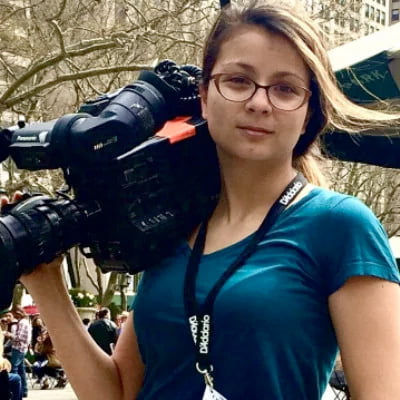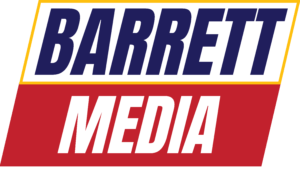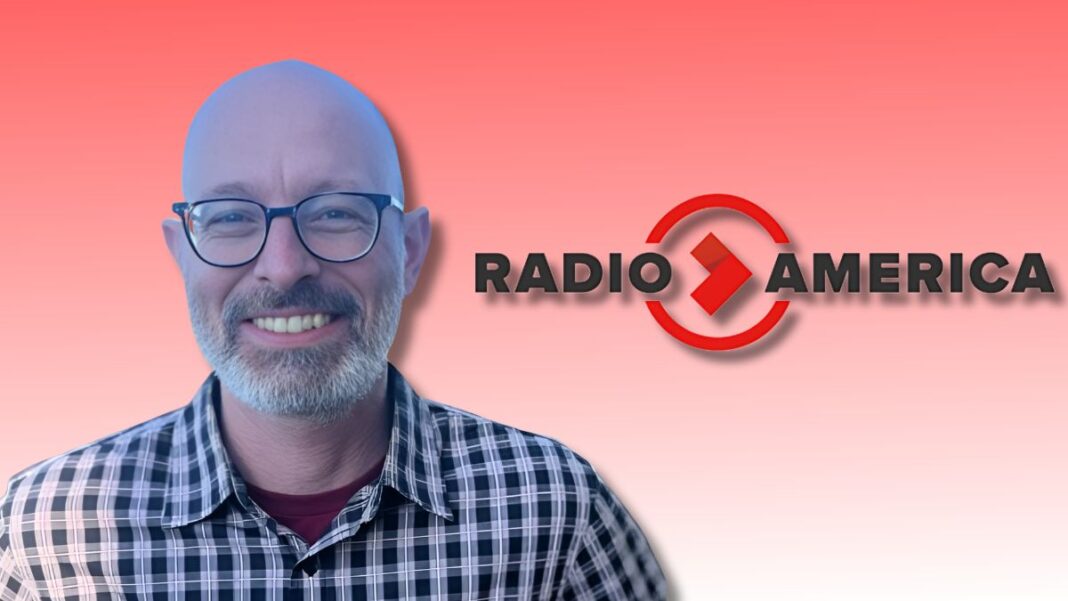Since 1985, Radio America has pushed the envelope forward on what it means to produce radio content on and off the mic. For nearly 25 years, Mike Paradiso is along for the ride.
“I think we really got our footing and where we reinvented ourselves was 15-plus years ago when we started prospecting and launching some of our own shows from scratch,” Paradiso said.
From sales representative to CEO, Paradiso has helped develop some of Radio America’s greatest talent and it all started with a love for sports. “I actually thought initially I wanted to do sports writing.” But in college he found his “journalist niche” was “getting to the bottom of a story. I was always a really big researcher and could get the really dive deep into a story and understand all the different angles.”
He worked through school and gravitated toward the business and sales side of the industry. This, paired with the desire for getting to the bottom of a story, had Paradiso looking for alternative media. “That’s what eventually drew me to talk radio and center-right media was many stories were not being covered by the mainstream media.”
What was (and still is) great about Radio America is its ability to innovate and serve an audience that isn’t a typical audio demographic.
“One of the big things we were hearing from a lot of stations was that the Adults 25-54 audience was not being served anymore in the format,” said Paradiso. “The hosts and the content were geared towards an older, mostly male audience.”
Putting the audience first, Radio America began looking to reinvent itself and subsequently found different ways to target the FM talk stations coming up in the mid-2000s. “[We] really accelerated as we got into the 2010s and beyond. That’s what led us to launch Dana Loesch and Chad Benson. We looked at bringing in younger hosts that were going to be more in tune with pop culture, had a different sound, and were going to sound good on FM. We were really programming them for FM talk stations.”
Continuing to change as the industry itself rapidly changes to digital is a huge part of their business. “Because the audience consumes the content in so many different places and they’re just a younger audience,” he added. “And when I say younger, I mean people in their 30s and 40s.”
Podcasts and YouTube might not hit for a lot of radio stations but with the demographic it is perfect. “One of our biggest shows is Chicks on the Right. It was one of the first multi-platform shows when we launched it in 2019. The show was being podcasted, and streaming live on Facebook and YouTube. At that time, we were looking at different ways to reach the audience. Now, everybody’s kind of doing that.”
It takes more than just good ideas to create a successful audio business; it takes good talent. “All good talent has to have a show coming out of them that is bursting to get out of them. They have to want to, and be passionate about something and want to talk about it. Obviously they also need the skills of just getting on the air every day, and talking and explaining things very well and passionately.”
Most importantly, Paradiso believes a good host “is able to connect with the listener or the viewer, being able to build that engagement so that the listener or the viewer sees them as a friend or it feels like they have a relationship with them. I think more than anything, we look at that ability of the talent to engage the listener.”
With his (and Radio America’s) expertise in innovative radio, Mike Paradiso believes there is one big feature that is key to the future of the medium. “It’s live. The live nature of radio is one of the more compelling parts of it. I think there’s always going to be that strong radio audience for the stations that program effectively and correctly. They’re offering enough things that people can’t get elsewhere. In a lot of cases, that’s going to be for their communities.”
One thing to keep in mind is that just because you are on the radio does not mean the audience automatically shows up. “You have to work really hard at it. That’s for radio stations and local programs,” the Radio America CEO said. “Then, I think the syndicated programs have to be able to, and for them to be successful within this radio landscape, incorporate themselves into those [local] radio stations.”
Its another point which Paradiso believes Radio America does well. “All of our talent are really good with doing local endorsements for their stations if asked and needed. We do customized promos for stations. We’ve even done some some hybrid local national deals where we’re able to incorporate some local segments with some stations.”
The main thing radio outlets need to do is stay relevant?
“There’s just so much competition. I think some stations will do [stay relevant] and some won’t. It’s going to be harder to have successful radio stations unless you’re doing the right things. You see a lot of successful radio stations now and it’s because they’re doing the right things.”
Barrett Media produces daily content on the music, news, and sports media industries. To stay updated, sign up for our newsletters and get the latest information delivered straight to your inbox.

Krystina Alarcon Carroll is a news media columnist and features writer for Barrett Media. She has experience in almost every facet of the industry including: digital and print news; live, streamed, and syndicated TV; documentary and film productions. Her prior employers have included NY1 and Fox News Digital and the Law & Crime Network. You can find Krystina on X (formerly twitter) @KrystinaAlaCarr.









